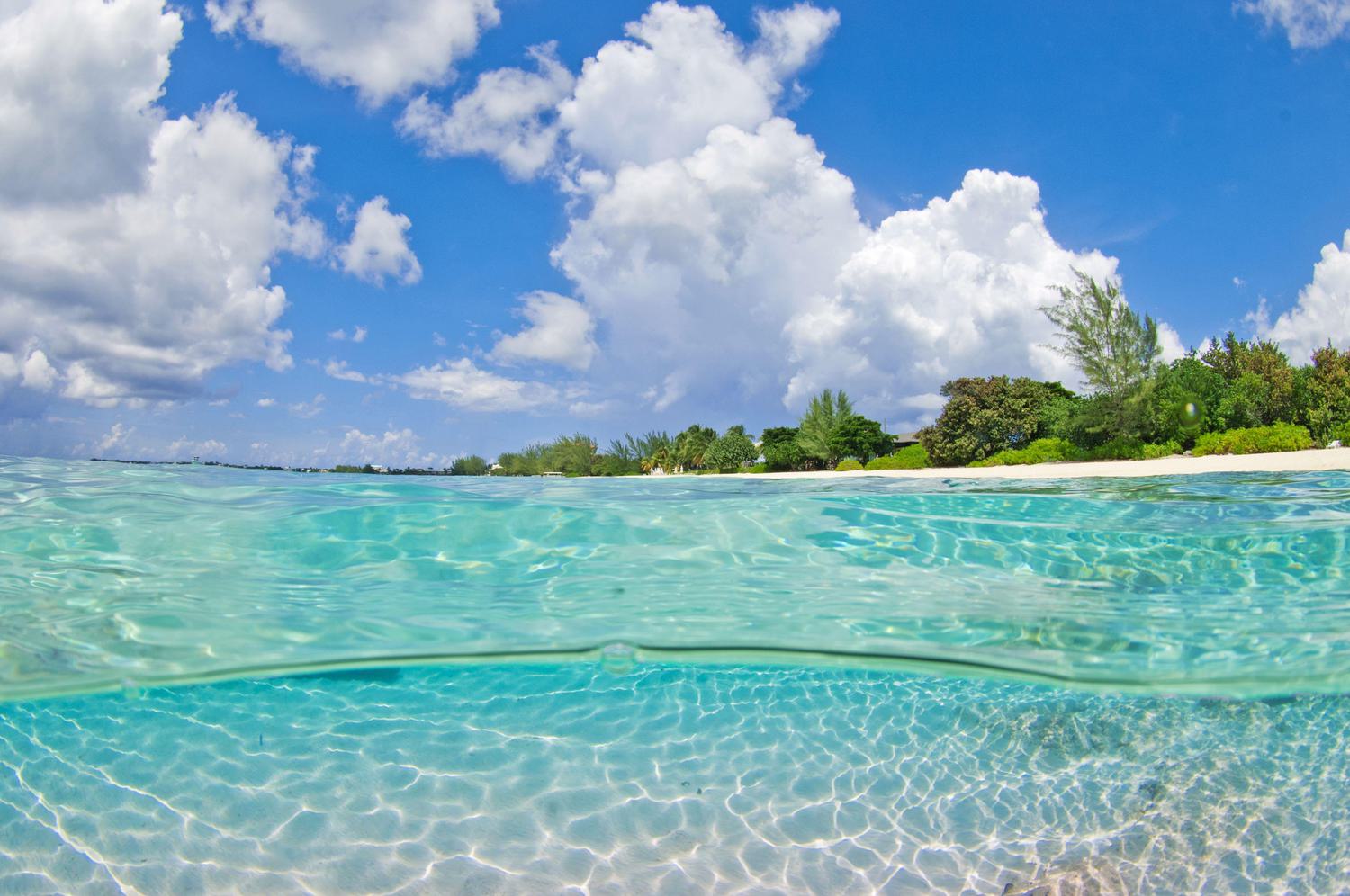Cayman's temperature is quite typical for that of a 'Caribbean' island. Balmy warm days that cool off slightly at night with a light breeze blowing in from the Caribbean sea. There is a definite rainy season where locals can almost expect to be met with an afternoon shower over their lunch break like clockwork ... so remember to pack your umbrella!
On This Page
The most pleasant weather in Cayman is during the winter, from mid-November to April. During this time there is little rain, the skies are more clear than cloudy, and there is an almost constant cool sea breeze. These months also coincide with peak tourist season.
Typical Weather
May to November is the rainy season, but unless there is a tropical depression sitting over Cayman, the rain is normally only heavy for a few hours and then stops for the rest of the day. It is not uncommon to have heavy rain in one part of town while it remains dry in another.
According to the World Meterological Organisation (WMO) 2024 was the warmest year on record with global temperatures being 1.55 degrees Celsius above the per-industrial 1850-1900 baseline. The last ten years, from 2015-2024, have been the warmest on record. In July 2023 the hottest temperature recorded was 53.9C (129F) in Saratoga Spring, California.
The Cayman Island's hottest day in 2024 was August 20th 2024 when the temperature reached 32.11C (89.8F). In 2023 the Cayman Islands experienced a rainfall deficit but 2024 reversed that with above average rainfall. In 2024 the total rainfall was 67.7 inches, compared to a climatological average of 47.6 inches. It was the wettest year since 2005. The wettest months were June and September with tropical storm systems and Hurricane Beryl, Hurricane Helene and Hurricane Raffael contributing to the above average rainfall and flooding that ensued. On June 10th, the rainiest day of 2024, 5.74 inches fell in one day causing widespread flooding and the Government shut down schools for two days. The lowest temperature, 21.88C (71.4F), was recorded on November 21st 2024. The average humidity was 77%.
For more information on the weather in the Cayman Islands in 2024 see the www.weather.go.ky very informative website.
Average Weather by Month in 2024
| Month of the Year | Avg. Minimum Temperature | Avg. Maximum Temperature | Total inches of rainfall | Average Humidity (%) |
|---|---|---|---|---|
| January | 76.3˚F or 24.6˚C | 85.1˚F or 29.7˚C | 1.5 | 74 |
| February | 73.2˚F or 22.9˚C | 83.7˚F or 28.7˚C | 0.0 | 67 |
| March | 77˚F or 25˚C | 84.5˚F or 29.2˚C | 0.61 | 72 |
| April | 78.5˚F or 25.8˚C | 86.2˚F or 30.1˚C | 1 | 72 |
| May | 81˚F or 27.2˚C | 90.8˚F or 32.7˚C | 2.44 | 74 |
| June | 78.7F or 25.9˚C | 89˚F or 31.7˚C | 20.97 | 82 |
| July | 78.7˚F or 25.9˚C | 90.1˚F or 32.3˚C | 3.68 | 74 |
| August | 78.8˚F or 26˚C | 90.2˚F or 32.3˚C | 3.62 | 72 |
| September | 77.3˚F or 25.2˚C | 89.4˚F or 31.9˚C | 9.25 | 73 |
| October | 77.3˚F or 25.2˚C | 88.1˚F or 31.2˚C | 4.61 | 74 |
| November | 71.4˚F or 21.88˚C | 85.3˚F or 29.6˚C | 1.53 | 74 |
| December | 74.5˚F or 23.6˚C | 84˚F or 28.9˚C | 4.13 | 73 |
Natural Disasters
Thankfully Cayman’s last major hurricane was in September 2004. Hurricane Ivan, a category five storm, caused major infrastructural damage plus took two precious lives. However, in August 2021 Tropical Storm Grace, which passed 20 miles south of Grand Cayman and 94 miles from Cayman Brac at its closest point, became a Category 1 hurricane only after leaving our area and yet it caused a huge amount of destruction to our vegetation and trees. The Botanic Park reported having mature trees being snapped in half. So the Cayman Islands remains vigilant about hurricane preparedness. In this section you will also find everything about getting yourself and your household stocked and ready, as best you can, for a hurricane. It will also help explain where the hurricane shelters are located in Grand Cayman and which companies can sell you storm shutters for your home. Best to prepare before June 1st though as the supermarkets and hardware stores become a heaving mass of bodies when an approaching storm is announced.
We also discuss the fact that Cayman lies on the boundary of the Caribbean and North American tectonic plates, in an active transform boundary zone, which means that the tectonic plates are sliding past each other. This means that the area is known for the occasional earthquake and had a recent tsunami scare in January 2020. Being prepared and having a plan is essential. Make sure your family knows what to do in the event of a major earthquake occurring in the region.
Hurricane Preparedness
Tips and information for dealing with hurricanes in Cayman
Earthquakes and Tsunamis
Get information about the history of earthquakes and tsunamis in Cayman and what to do to prepare.
Waterspouts and Tornadoes
Waterspouts are often confused with tornadoes which are a very rare phenomenon for the Cayman Islands.
Emergency Alert System
Emergency Alert Systems have been developed in the Cayman Islands to provide the public with real-time alerts and notify them when a threat is declared.





